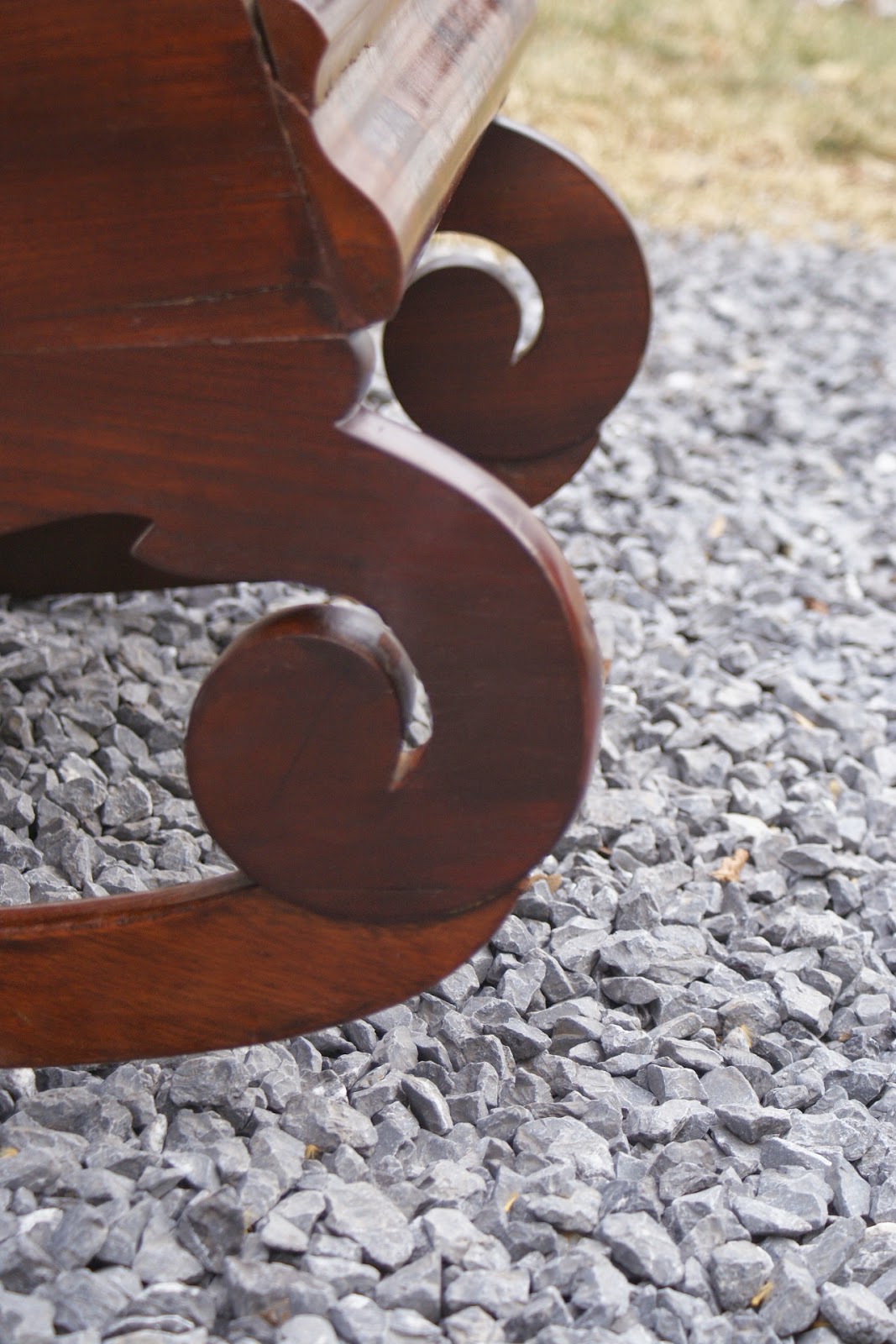 |
| The Completed desk |
One of our recent restoration projects was an oak roll top desk made in 1917 by National Desks. Presumably, this is the same company as the National Furniture Company of Mt. Airy, N.C. I found no reference to a National Desk Company but when I researched National Furniture Company Roll Top Desks I found several examples of similar roll top desks. In each case the general design was identical but the details like the hardware and the arrangement of the cubbies were different. Without being exactly sure of the manufacturer, I am certain of the date of manufacture and the subsequent retailer.
The desk was labeled in different places in different ways. The most prominent label is a plate on the interior one of the drawers. The label said Clark & Gibby, NY. At first I thought that this was the manufacturer but we later found stamped on the top of a drawer front "National Desks" as seen below:
I believe that National Desks, or more likely the National Furniture Company, was the manufacturer and Clark and Gibby was the retailer. After removing the interior cubbies to make repairs, we found this label:
The label shows the style and model number,indicating that a specific model had options that would be contained in a particular style. Also in the lower left hand corner is a completion date of 1917. This would have been used in the manufacturing process and not meant to be seen by the public, but it is always nice to find something like this because it pinpoints a date.
The roll top desk as a form developed in the second half of the 19th century. It's immediate predecessor was the cylinder desk which worked the same way but had a solid quarter cylinder for a lid. Here is a photo of one of these I restored and the links to those posts concerning its restoration:
As you can see, the"cylinder" part was solid and veneered with walnut. The roll top desk differed in that the lid was comprised of many half round slats adhered to a sheet of canvas. These slats would move in a a track in a similar fashion as the solid lid, but because they were separate, this made them more flexible. This allowed desk lids to take shapes or follow tracks that did not move in a fixed arc. What followed were lids with ogee profiles (probably the most famous) like this one:
As the from developed there were a lot of designs, but in the beginning of the 20th century, a larger desk came on the market with a roll top that followed a single curve. At the time, it was labeled a modern roll top desk. The desk I worked on falls into this category. Below are a few photos from around 1917 showing the large "modern" roll top desk in use:
The desk had a lot of wear and tear and also many mechanical issues. The finish was in a restorable condition so we concentrated first on the repairs.
The veneer along the sides had loosened and then chipped away over time leaving this:
New oak veneer patches were cut to patch the missing portions as seen below:
The case was generally loose and needed to be tightened. That process can be seen in the next photo. Besides that here was lost of "nuts and bolts" repairs, like replacing missing stop blocks, building up drawer bottoms, stabilizing interior runners, etc.
After all of the repairs were made, the finish was cleaned and restored using shellac. The finish was faded in several places so stained the desk selectively, as well as touching up the patches. I also made keys for the locks and generally made sure everything was working well. The completed roll top desk can be seen in the photos below.
































